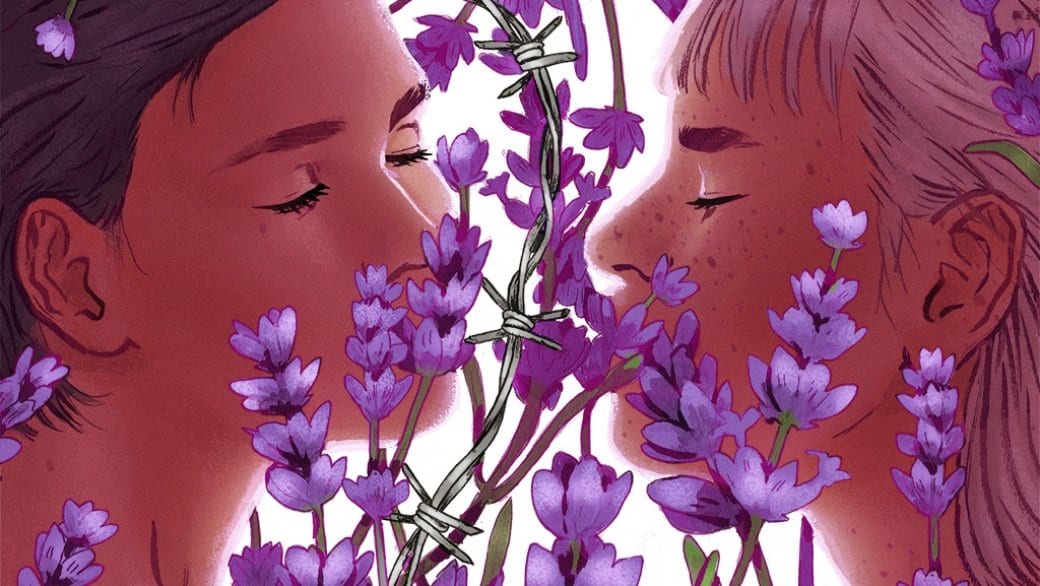In the 1930s, a lesbian who accepted her sexual orientation and sought female partners was said to be “in the life.” According to Lillian Faderman’s book Odd Girls and Twilight Lovers, the wide range of lesbian slang terms in use at the time is evidence of a lively lesbian subculture in the United States. However, she argues, if not for the Great Depression, it would have grown much faster.

The Great Depression caused some of the gains of the 1920s, in terms of sexual freedoms, to be lost. More people were aware of lesbianism than ever before in the 1930s, but to live as a lesbian was a very difficult — borderline reckless — choice to make. Fear of lesbians was higher than before, and the state of the economy meant that women couldn’t easily support themselves without men. Women were strongly discouraged from having any kind of job, but especially the higher paying ones. The thinking was that a working woman was a woman taking a job away from a man with a family to support. So, many lesbians hid that part of themselves and married men (sometimes with occasional lesbian affairs on the side).
Of course, these considerations may have had little effect on the lives of lower class women — who were never expected to have a high-paying job or a career anyway — or women from upper class backgrounds (of whom, Eleanor Roosevelt is a fascinating example). Not to downplay the hardships of poverty, but many poor women may have actually had greater freedom to live as they chose. There were about 150,000 homeless women in 1933. While roaming the country, a woman — a “sister of the road” as her male counterparts described her — could simply lie and say the woman by her side was there for companionship and safety.
With many lesbians marrying men — and given the circumstances, who can blame them? — lesbian culture was somewhat stunted and what did exist was difficult to detect, but many brave women still did their best to live and love honestly. Faderman writes: “Females in the 1930s who did accept the label ‘lesbian’ had to discover on their own that it was possible to live as a lesbian in America and not be driven to suicide or neurasthenia, as fictional and medical book lesbians almost always were.” Neurasthenia is an antiquated medical term meaning a weakness of the nerves.
Back to that lovely, lovely lesbian slang. Much of the slang developed in women’s prisons and then spread to other areas of society. “Dyke,” “bulldyke,” “bull dagger,” “gay” and “drag” had been in use since the 1920s. New in the 1930s were “queer bird” and “lavender” (both meant lesbians), “sil” (which meant a lesbian who was silly in love with another), “trapeze artist” (a woman who gave cunnilingus). A butch might be called a “mantee,” “jockey,” “daddy,” “poppa,” “husband” or “top sergeant;” a femme was a “mamma” or a “wife.” There was also the middle class term “spook” which, Faderman says, meant “a woman who strayed into lesbianism as second best but stayed because she discovered she liked it better than heterosexuality.”
If a lesbian was lucky, she might meet another woman at such all-female institutions as certain colleges, universities or summer camps. If she were wealthier, she might belong to a private club, such as the New York City–based Nucleus Club, which held weekly parties for homosexuals of every stripe. No option was entirely safe — even the Nucleus had to have the rule that when a gay man left one of their events, which were held in private homes, he had to leave arm-in-arm with a lesbian and walk affectionately along in order to fool any onlookers or nosy neighbours into thinking it was a plain ol’ heterosexual bash. And of course, most of the major cities had a few homosexual-friendly bars apiece.
With pickings so slim, and with the inevitable alienation from friends and family, being in the life was often lonely. But, in Faderman’s terms, in the “social wasteland” of America, you could find lesbian “oases.” In other words, much like today, in big, anonymous cities like Boston, Chicago, San Francisco and New York City, lesbians could — and often did — find meaningful relationships, exciting sex and a good chance of being happy.
(History Boys appears on Daily Xtra on the first and third Tuesday of every month. You can also follow them on Facebook.)
(Original illustration by Stephen McDermott)


 Why you can trust Xtra
Why you can trust Xtra


